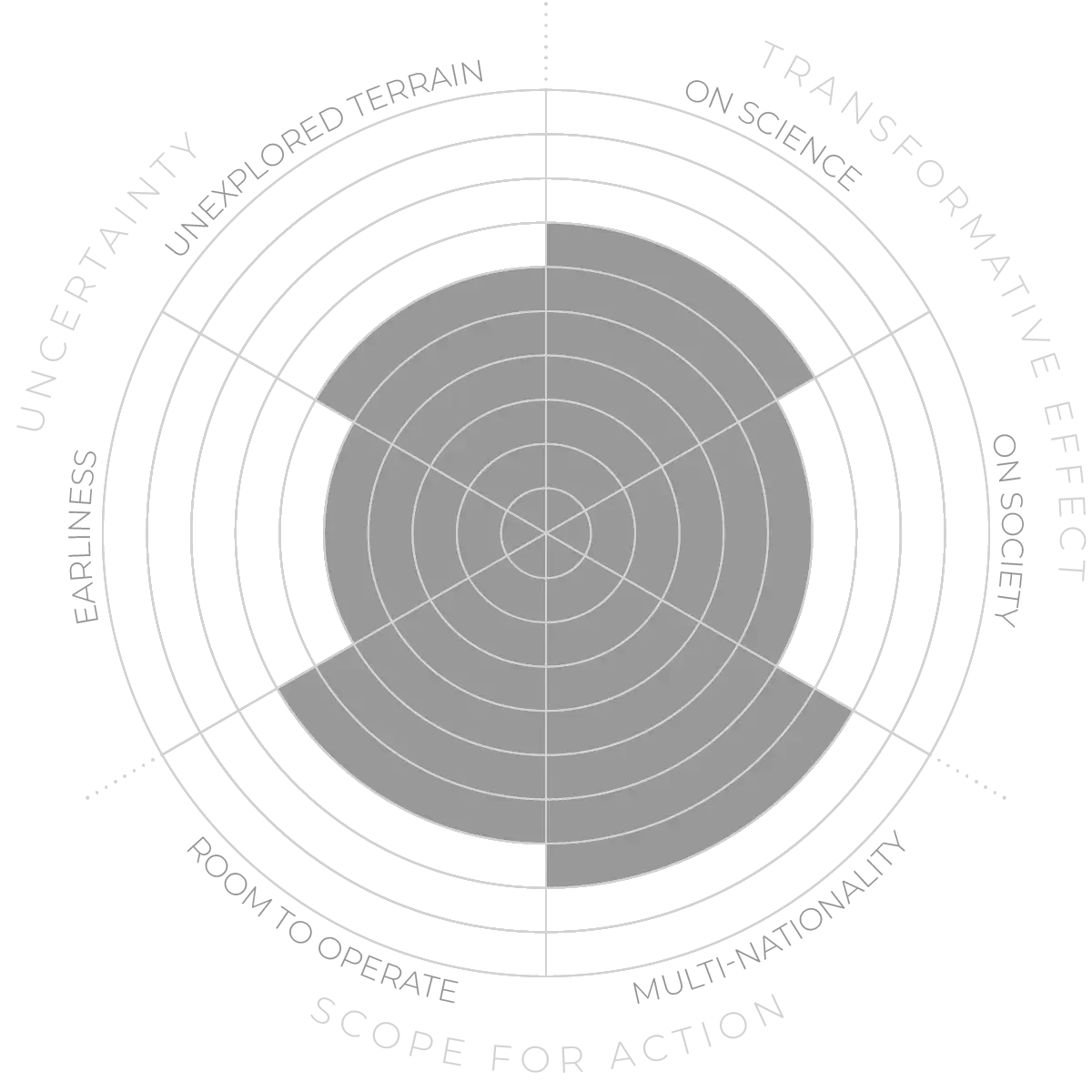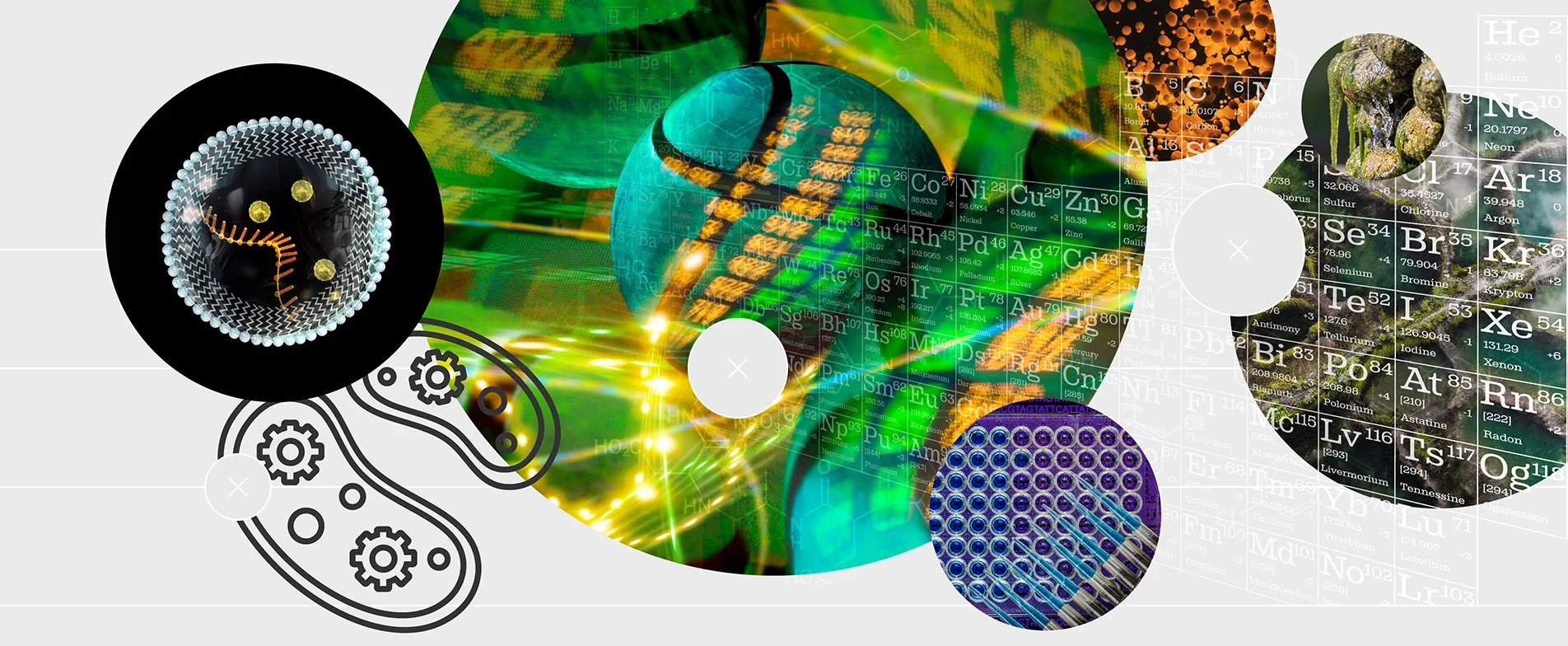Future Horizons:
10-yearhorizon
Chemical computation becomes possible
25-yearhorizon
Predictions of life-like chemistry become possible
Commensurately, researchers are studying how individual chemical reactions can aggregate to form network-level chemical systems that demonstrate attributes that we generally associate with life.6,7,8 Machine learning may prove to be a useful tool for understanding the properties of these chemical networks.9
There is a growing scientific understanding of how systems of chemicals can change over time and in particular what it might mean for them to “evolve” in the absence of true genetic control. Recent findings indicate multiple characteristics that could be used to define a genuinely “complex” chemical predecessor to life at the systems level.10,11 These might include: an emergent set of chemicals or processes that is robust even amid changes to the rest of the system; systems that are far from chemical and thermodynamic equilibrium (a non-equilibrium state is one of the central features of life); or emergent chemical systems that are capable of processing information (but which do not require explicit structures, such as genes or the ribosome, to store or process biological genetic information).12
Prebiotic chemistry - Anticipation Scores
The Anticipation Potential of a research field is determined by the capacity for impactful action in the present, considering possible future transformative breakthroughs in a field over a 25-year outlook. A field with a high Anticipation Potential, therefore, combines the potential range of future transformative possibilities engendered by a research area with a wide field of opportunities for action in the present. We asked researchers in the field to anticipate:
- The uncertainty related to future science breakthroughs in the field
- The transformative effect anticipated breakthroughs may have on research and society
- The scope for action in the present in relation to anticipated breakthroughs.
This chart represents a summary of their responses to each of these elements, which when combined, provide the Anticipation Potential for the topic. See methodology for more information.



